“There are too many clothes on the planet… so much that there is enough already in existence to dress the next six generations of the human race.” The next SIX generations! This shocking statistic (from fashion designer and Community Clothing founder Patrick Grant) was one of the many thought-provoking facts revealed at the recent Reinvented & Reclaimed exhibition at OCAF (Oconee Cultural Arts Foundation). The exhibition, which featured wearable art from recycled materials, was held in celebration of Global Recycling Day.
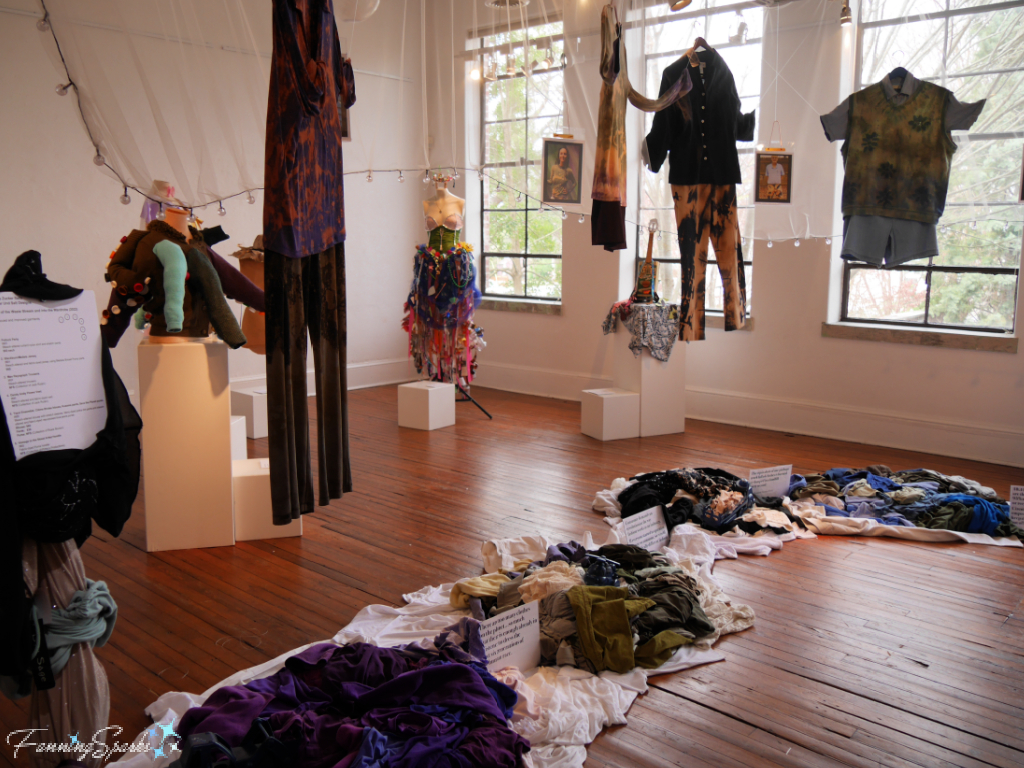
The exhibition included an interesting variety of wearable art from local artists—ranging from the whimsical to the practical. This delightful Vintage Book Dress was made by Jessica Varsa from reused donated books, glue, reused satin dress and burlap fabric.
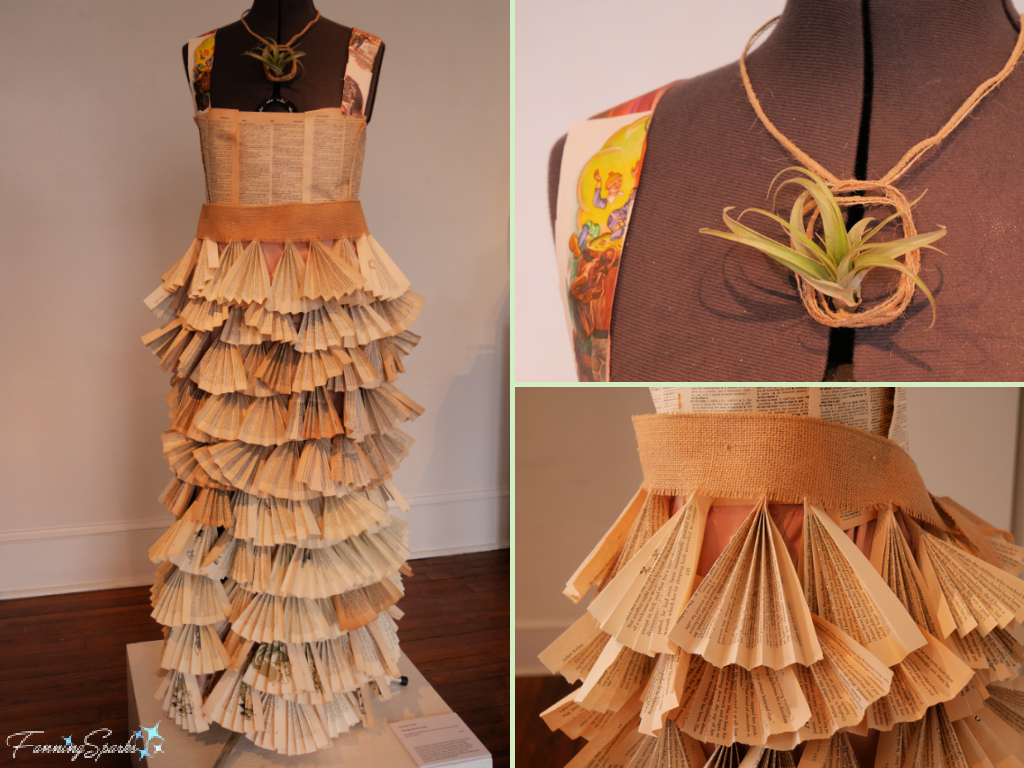
The two recycled art pieces shown below fall on the practical end of the spectrum. The bag on the left, titled Daddy’s Ties, was made by Paula Lansford. The accompanying exhibit tag explains its heartwarming story “When my Father passed away I wanted to create something that would remind me of him. Every day, no matter what, he would wear a tie. I created a bag I could use, of ties he loved to wear.”
Regular readers may recognize the FanningSparks Maker Apron on the right.
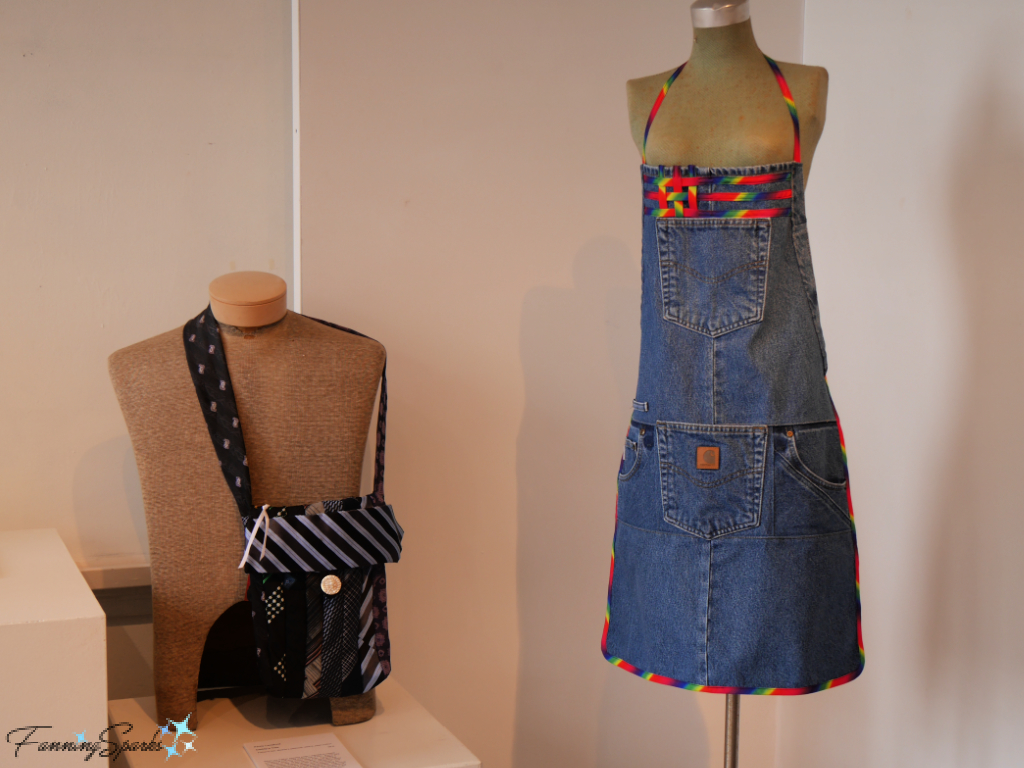
This is the first time I’ve participated in an art exhibition. It was fun going through the submission process and preparing the requested information. I even wrote my first artist statement! The Maker Apron, made from a pair of thrifted denim jeans, is very serviceable. A full tutorial was featured here on the blog in the post Maker Apron – DIY Tutorial.
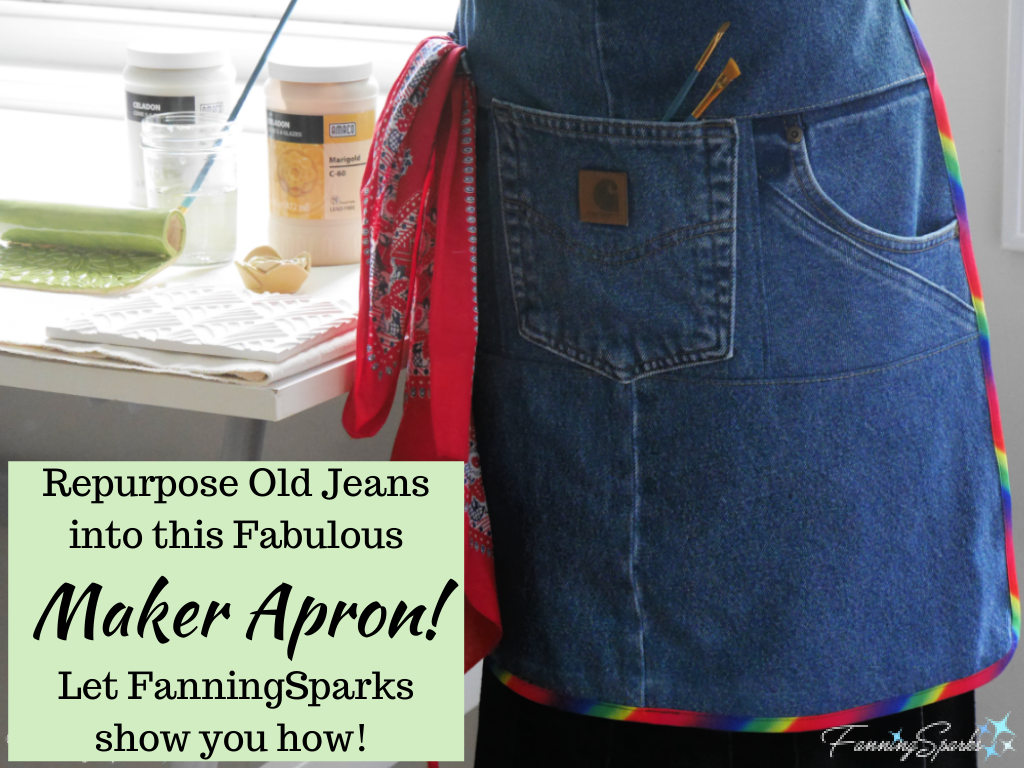
The below sun hats were made from newspaper by Margaret Agner. The artist’s statement explains “I’ve made two big sun hats from old newspapers, crushed down and tied over bowls or pans, and allowed to dry after spraying with starch, water and paint. Embellishing with junk from my collection was the fun part, finding old plastic things and cellophane …to make flowers and hatbands.”
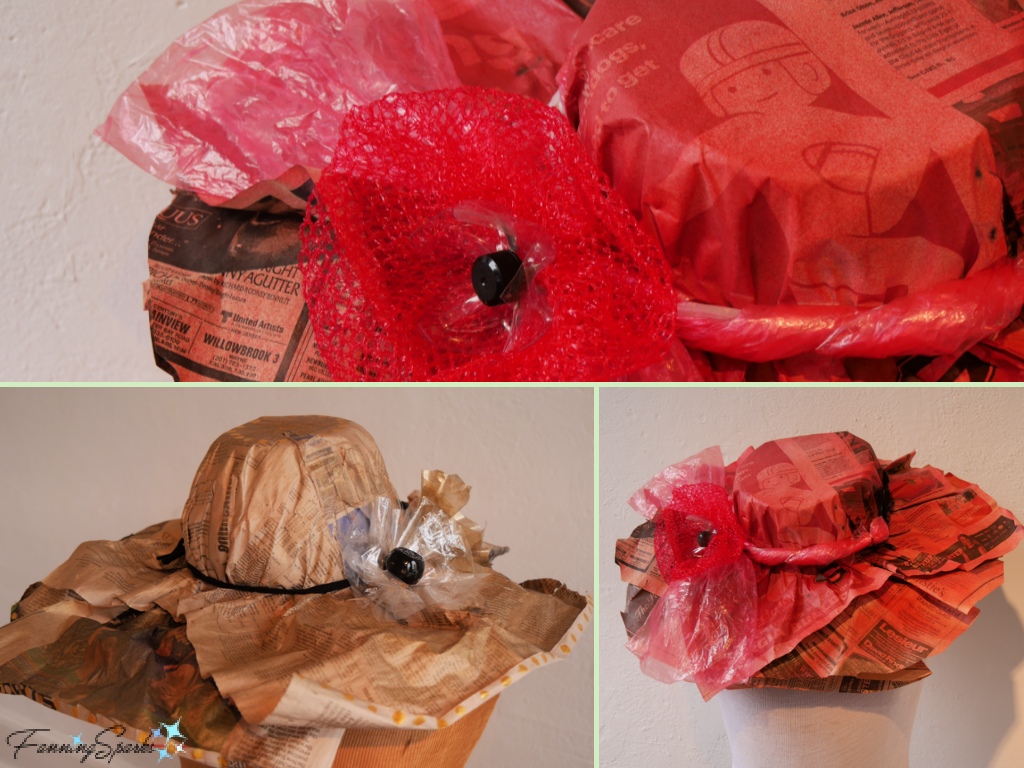
This creative piece, titled Caution: Hot Stuff, was created by a team of 12th grade students from Oconee County High School. It is made from discarded fabric, broken shoes, glass, aluminum, cardboard, wire, snack trash, pop tabs, dry pallet paint, scrap metal, forks and newspaper.
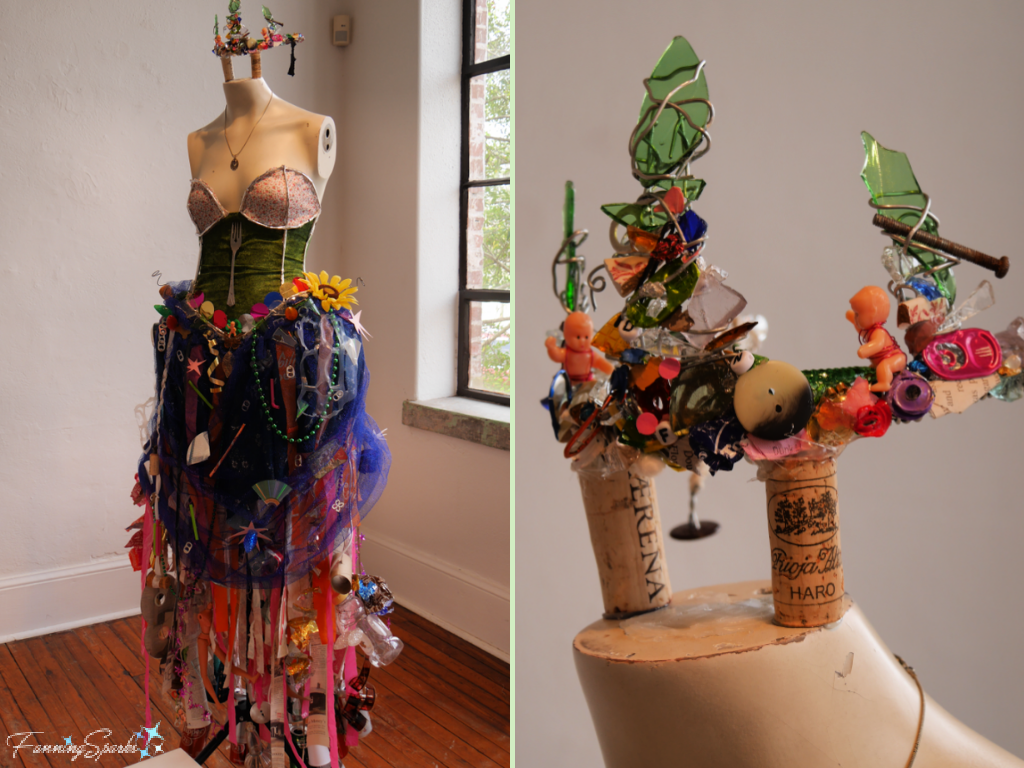
This collared shirt is part of an ensemble by Lizzie Zucker Saltz, of Sugar Und Salt Designs, titled Pollock Party. It is a rescued garment improved with bleach altering. The artist notes “These are Goodwill rescues, ie flawed, likely to get yanked in 3-4 weeks. When an item doesn’t sell, Goodwill tries to sell it at a 99-cents-a-pound outlet… They also hold bulk auctions, and if that fails, sells to textile recycling companies which shred clothing for use as carpet padding, inside automobiles or resell as rags.
Some clothes are exported to 3rd world countries where their low prices can have a destabilizing effect on local textile businesses. So much so that several African countries tried to ban thrift imports in 2019.”
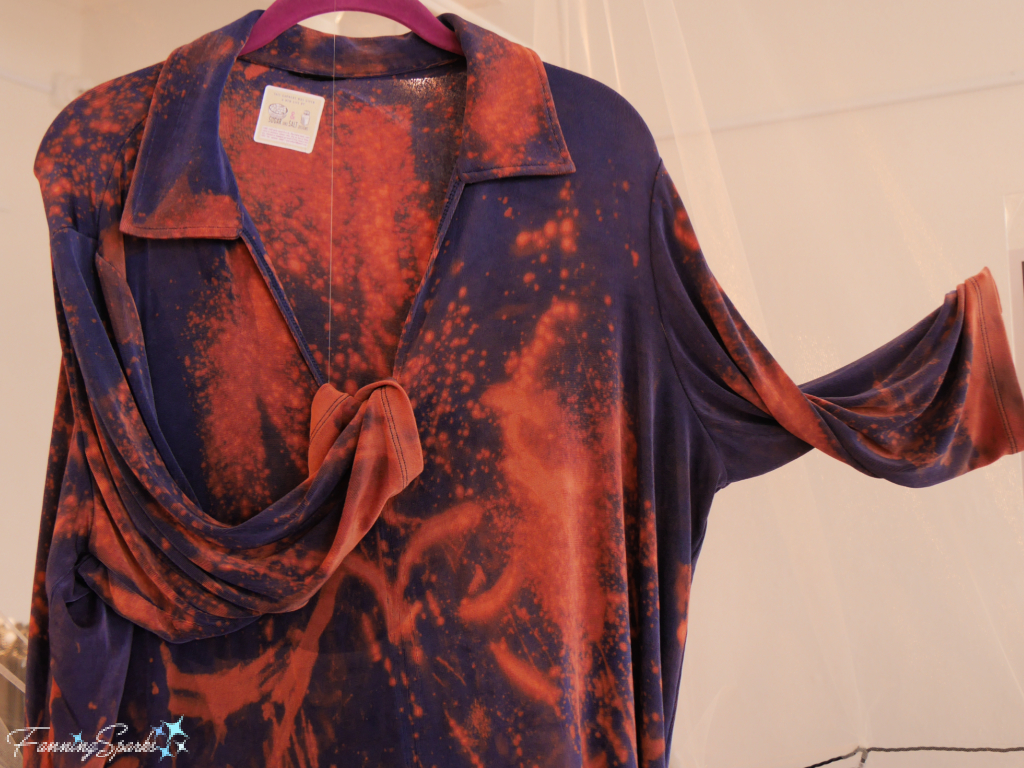
The exhibition included two imaginative cloaks: Murmurations by Abigail West and Harry Potter Cloak of Invisibility by Christopher Garrison. Both utilized bubble wrap creatively embellished with a variety of other materials.

Unexpected items can also be reinvented and reclaimed as jewelry. In the below piece, Margaret Agner transforms photographic slide frames into a striking necklace.

A rainbow of discarded clothing provided the backdrop for a few well-chosen data points. Shown below is a statistic from the World Economic Forum explaining that “The equivalent of one garbage truck full of clothes is burned or dumped in a landfill every second.”
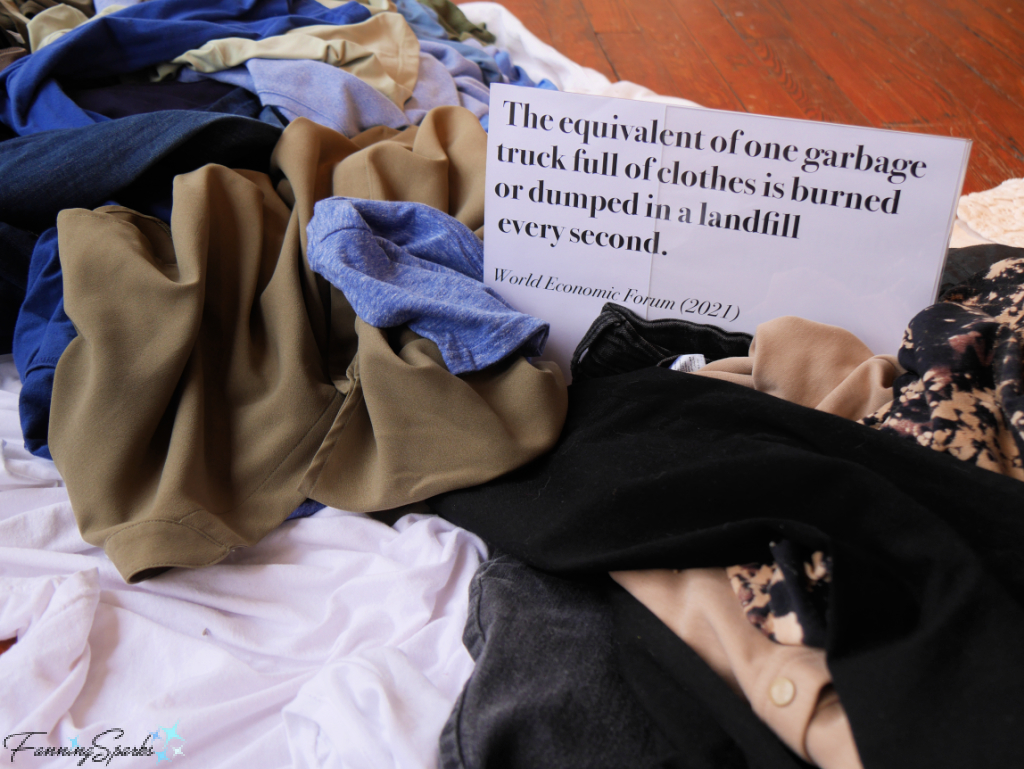
Patrick Grant, also mentioned at the top of this blog post, is a Scottish fashion designer and businessman. He is best known for his role as judge on the BBC TV show The Great British Sewing Bee. He is the founder of Community Clothing, a social enterprise which creates employment and pathways to employment in the United Kingdom’s textile manufacturing regions. Grant provides this sage advice: “The most sustainable clothes are the ones that already exist. So if you really want to live in a way that’s best for the planet then love the clothes you have, fix them, pass them on, swap them, ebay them, or give them to a charity shop or a clothing bank.” OCAF’s Reinvented and Reclaimed exhibition provided plenty of inspiration to do just that!
More Info
Reinvented & Reclaimed: A Recycled Art Exhibition was hosted by OCAF (Oconee Cultural Arts Foundation) in Watkinsville, Georgia, USA from March 18-30, 2022. The exhibition was supported by the Georgia Council for the Arts, in partnership with the Keep Oconee County Beautiful Commission, the Oconee County Library, and UNG-Oconee Campus.
Check out the FanningSparks blog post Maker Apron – DIY Tutorial for step-by-step instructions to transform a discarded pair of jeans into a functional apron.
Learn more about the fashion waste crisis from the ThredUp 2021 Resale Report.
Today’s Takeaways
Here are a few more data points for your consideration from the Reinvented & Reclaimed exhibition:
1. “18.1 billion pounds of apparel are thrown away annually, 95% of which could be reused or recycled. Circular models, like resale, empower consumers to keep clothing in use and out of landfill.” ThredUp
2. “The fashion industry contributes up to 10% of global carbon emissions—more than all international flights and maritime shipping combined.” Water Footprint Calculator
3. “Extending the life of a piece of clothing an extra nine months reduces its carbon, waste and water footprint by 20-30%—which means shopping more mindfully and buying secondhand is one of the best ways we can reduce fashion’s environmental impact.” Water Footprint Calculator


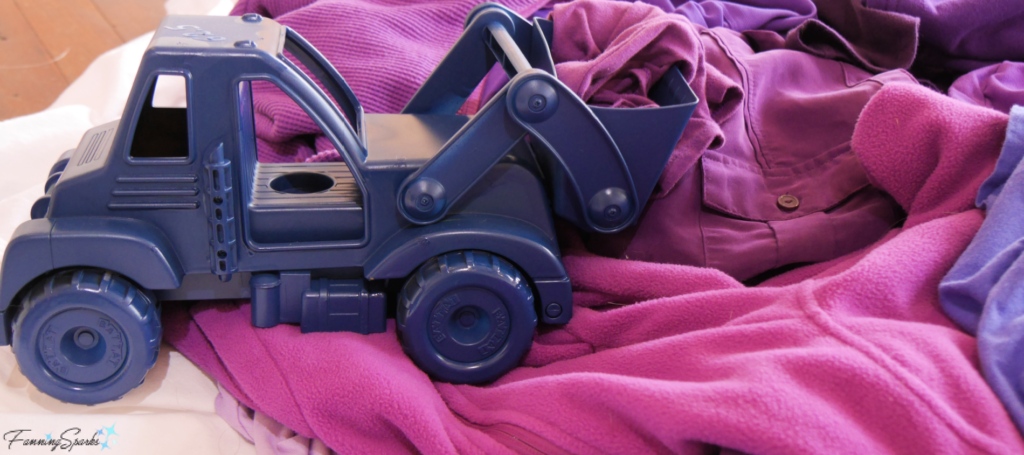


Comments are closed.